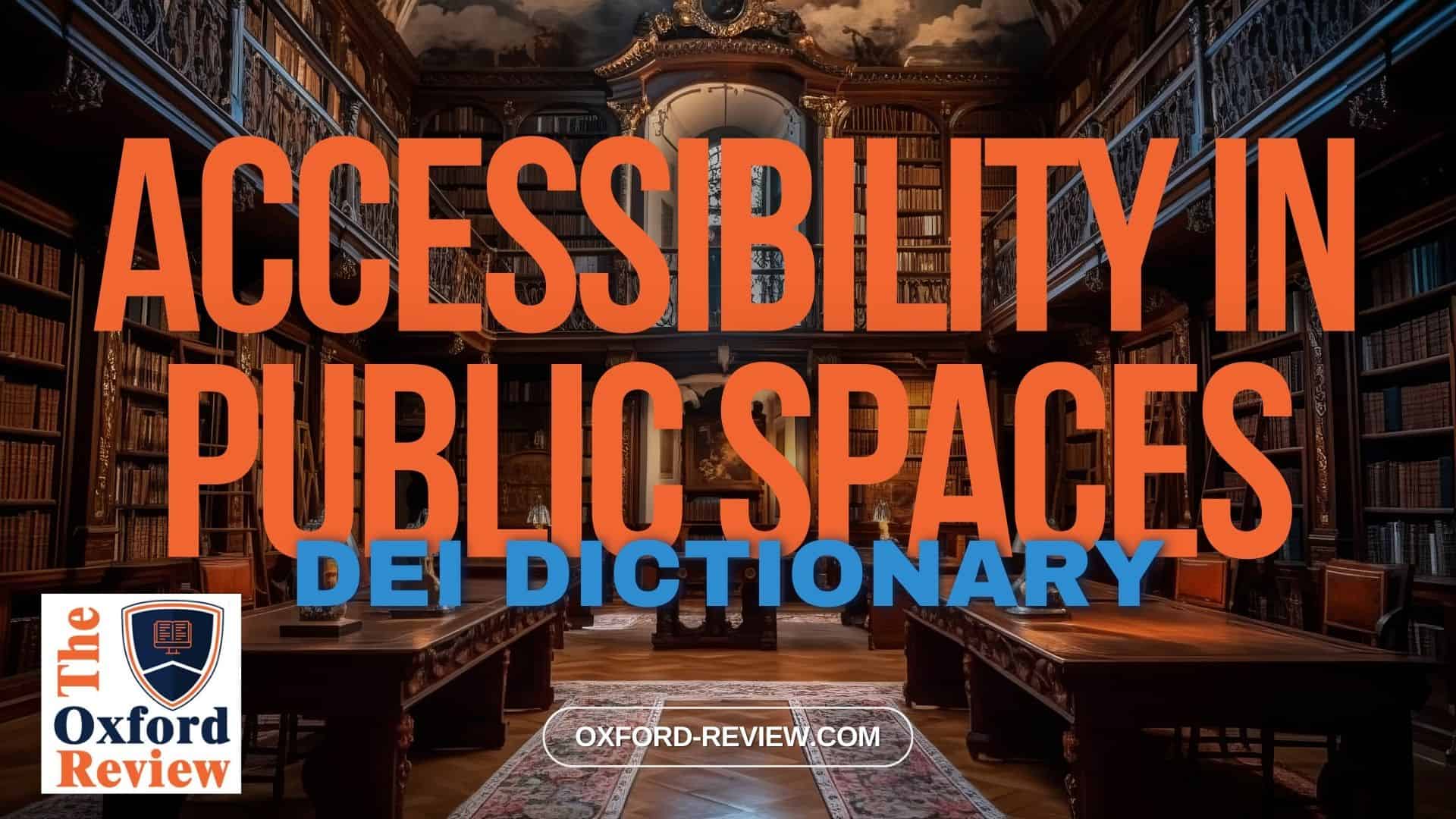Accessibility in Public Spaces – Definition and Explanation

Understanding Accessibility in Public Spaces: Ensuring Inclusion for All
Accessibility in public spaces is a fundamental aspect of promoting diversity, equity, and inclusion (DEI) within communities. It refers to the design and implementation of infrastructure, facilities, and services that accommodate individuals with disabilities, ensuring they can navigate and participate in public life without barriers.
Definition:
Accessibility in public spaces encompasses various elements aimed at making environments usable and welcoming for everyone, regardless of their physical abilities. This includes but is not limited to:
- Physical Accessibility: This involves features such as ramps, lifts, widened doorways, and tactile paving that enable individuals with mobility impairments to navigate public spaces independently.
- Sensory Accessibility: Public spaces should cater to individuals with sensory disabilities, such as visual or hearing impairments, by incorporating features like Braille signage, audio descriptions, and visual alarms.
- Cognitive Accessibility: Designing public spaces with clarity and simplicity benefits individuals with cognitive disabilities. This can involve using plain language signage, avoiding clutter, and providing alternative formats for information.
- Inclusive Amenities: Public facilities such as restrooms, seating areas, and recreational spaces should be designed with inclusivity in mind, ensuring they are usable by individuals with diverse needs.
Importance of Accessibility in Public Spaces:
Ensuring accessibility in public spaces is not just a matter of convenience; it is a fundamental aspect of upholding the rights and dignity of all individuals within a community. Here are some reasons why it’s crucial:
- Promotes Inclusion: By removing physical and social barriers, accessible public spaces foster a sense of belonging and inclusion for individuals with disabilities, allowing them to participate fully in community life.
- Enhances Quality of Life: Accessible environments empower individuals with disabilities to engage in everyday activities independently, improving their overall quality of life and well-being.
- Legal and Ethical Obligations: Many countries have legislation in place, such as the Equality Act in the UK, mandating accessibility standards in public spaces to uphold the rights of individuals with disabilities.
- Benefits for All: Designing public spaces with accessibility in mind benefits not only individuals with disabilities but also older adults, parents with pushchairs, and temporary users with injuries, providing a more inclusive experience for everyone.
Example:
Consider a city park undergoing renovations. To ensure accessibility, the redesign includes features such as:
- Installation of ramps and handrails at entrances and pathways to allow wheelchair users to navigate the park easily.
- Addition of Braille signage with tactile maps at key locations to assist individuals with visual impairments in wayfinding.
- Incorporation of inclusive playground equipment designed to accommodate children of all abilities, including those with mobility challenges.
- Implementation of sensory gardens with aromatic plants and textured surfaces to create a multisensory experience for visitors with sensory sensitivities.
By prioritising accessibility in this park redesign, the city not only complies with legal requirements but also creates a welcoming and inclusive space where people of all abilities can enjoy recreational activities together.
Conclusion:
Accessibility in public spaces is a vital component of building inclusive communities where every individual can participate fully and independently. By incorporating features that cater to diverse needs, public spaces become more welcoming, equitable, and empowering for all members of society. Prioritising accessibility is not only a legal obligation but also a moral imperative that fosters a society where diversity is celebrated, and everyone has the opportunity to thrive.
References:
Belir, O., & Onder, D. E. (2013, October). Accessibility in Public Spaces: Spatial legibility for visually impaired people. In Proceedings of the Ninth International Space Syntax Symposium Edited by Kim, YO, Park, HT and Seo, KW. https://d1wqtxts1xzle7.cloudfront.net/61821423/SSS9_2013_REF073_P20200118-19299-z23z2z-libre.pdf?1579353770=&response-content-disposition
Brorsson, A., Öhman, A., Lundberg, S., & Nygård, L. (2011). Accessibility in public space as perceived by people with Alzheimer’s disease. Dementia, 10(4), 587-602. https://journals.sagepub.com/doi/abs/10.1177/1471301211415314
Be impressively well informed

Get the very latest research intelligence briefings, video research briefings, infographics and more sent direct to you as they are published
Be the most impressively well-informed and up-to-date person around...
